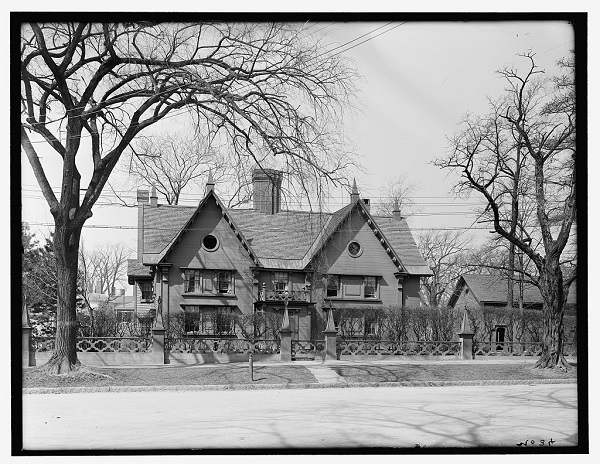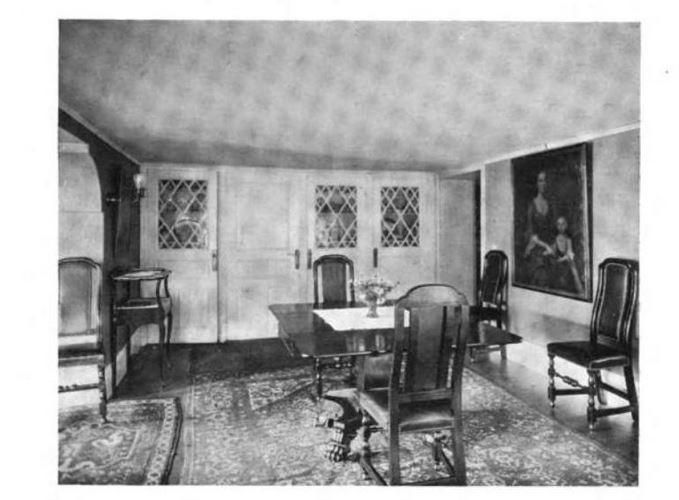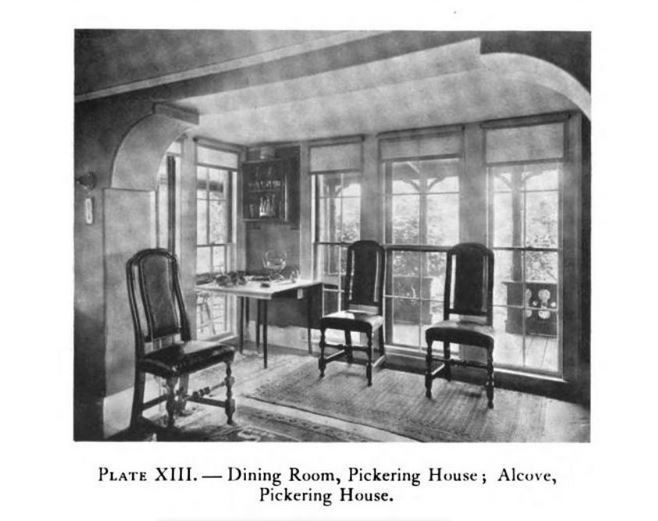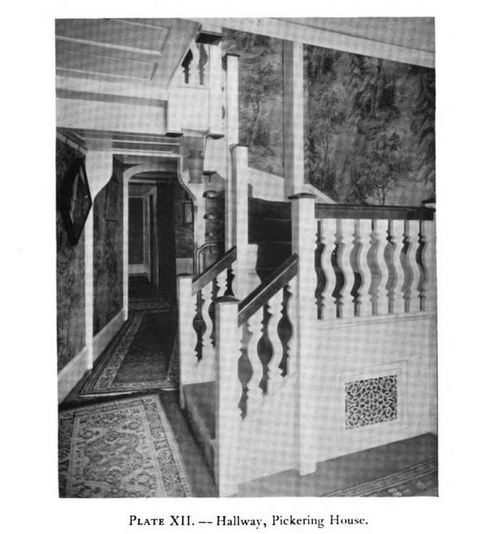Built sometime around 1660, the Pickering house is the oldest house in Salem, Massachusetts to be continuously occupied by one family.
The house was built by John Pickering Jr, a local farmer and town official, and was occupied by 10 generations of the Pickering family.
Although it has been renovated over the years, the house was originally a two-room farmhouse that consisted only of the present south-east rooms and the chimney bay.
The section of land the house was built on was originally owned by Thomas Antrum who conveyed it to his brother-in-law Edmond Batter. Batter then transferred it to brothers John Pickering Jr and Jonathan Pickering on June 10, 1659.
It is believed Jonathan gave the lot to his brother John soon after and the house was built on the lot the following year, according to Salem historian Sidney Perley in an article in the Essex Antiquarian magazine in 1900.
John Pickering Jr was a lieutenant in the local militia and was living in the house at the time he fought in the Battle of Bloody Brook in Deerfield during King Philip’s War in 1675.
In 1682, Pickering Jr expanded the house by adding another room and chamber to left of the chimney.
In 1694, Pickering Jr died and the house passed down to his son John Pickering. When John died in 1722, the house passed down to his son Deacon Timothy Pickering.
In 1751, Deacon Pickering expanded the house by adding a second story to the lean-to.
On July 17, 1745, Colonel Timothy Pickering was born in the house. Timothy later grew up to become a judge in the Massachusetts General Court, a colonel and then adjutant general in the Revolutionary War and the Secretary of State for the United States government in 1795. He became such a prominent citizen of Salem that Fort Pickering on Winter Island in Salem was named after him in 1799.
Colonel Pickering was living in the house when he helped fend off British soldiers in Salem during Leslie’s Retreat in February of 1775 and also when he fought at the Battle of Lexington in 1775.
Pickering was later appointed Quartermaster General of the Continental Army by George Washington and was present at the battles of Brandywine and Germantown and Cornwallis’ surrender.
When Deacon Pickering died in 1778 he was buried in the Broad Street Cemetery across the street and the house passed down to Colonel Timothy Pickering.
It is rumored that George Washington stopped by the house and tied his horse to an old locust tree in the front yard when he visited Colonel Pickering in 1789 (New Boston 56.)
After Colonel Pickering died in 1829, the house passed down to his son John Pickering Esquire.
In 1841, the exterior of the house was renovated in the Gothic Revival style with window hoods, new facade gables and a balustrade above the front entrance and a fence.
When John Pickering Esquire died in 1846, the house passed down to his son, also named John Pickering. John Pickering died in 1882 and then passed it down to his son, also named John Pickering.
In 1904, a new wing was added to the rear of the house and in 1948 the interior was restored by Boston architect Gordon Robb.
The last members of the Pickering family moved out in 1998 when the Goodhue family moved into the house and Albert Goodhue began serving as as the primary caretaker.
In 2001, the Pickering Foundation was formed, which is currently led by John Pickering.
The house is owned by the Pickering Foundation and is open to the public.
In 2010, the Pickering Foundation published a history book about the Pickering family and the house titled The House That John Built: Ten Generations of the Pickering Family of Salem.
Sources:
Perley, Sidney. “Part of Salem in 1700 No 5.” The Essex Antiquarian, Volume IV, No. 11, Essex Institute, November 1900
New Boston: Chronicle of Progress in Developing a Greater and Finer City – Under the Auspices of the Boston 1915 Movement. Editor: James Phinney Monroe, Vol II, No 2, 1911
Northend, Mary Harrod. Historic Homes of New England. Little, Brown and Company, 1914
“Appendix I.” Colonial Society of Massachusetts, colonialsociety.org/node/1967
“Pickering Foundation in Salem, Mass.” Buzzfile, buzzfile.com/business/Pickering-Foundation-978-744-4777
“The Pickering House.” Oxford-Tree Ring Laboratory, dendrochronology.com/pck.html
“Pikering House.” MACRIS, Massachusetts Cultural Resource Information System, mhc-macris.net/Details.aspx?MhcId=SAL.1044





This is a wonderful and informative blog. Thanks very much.
My family heritage.